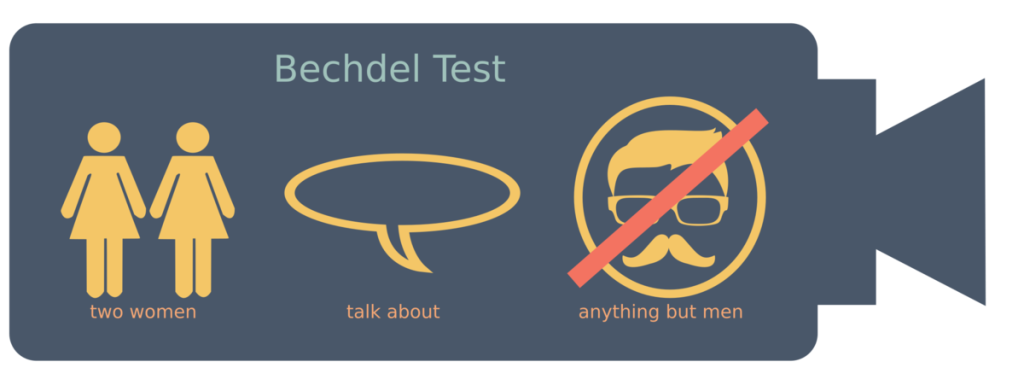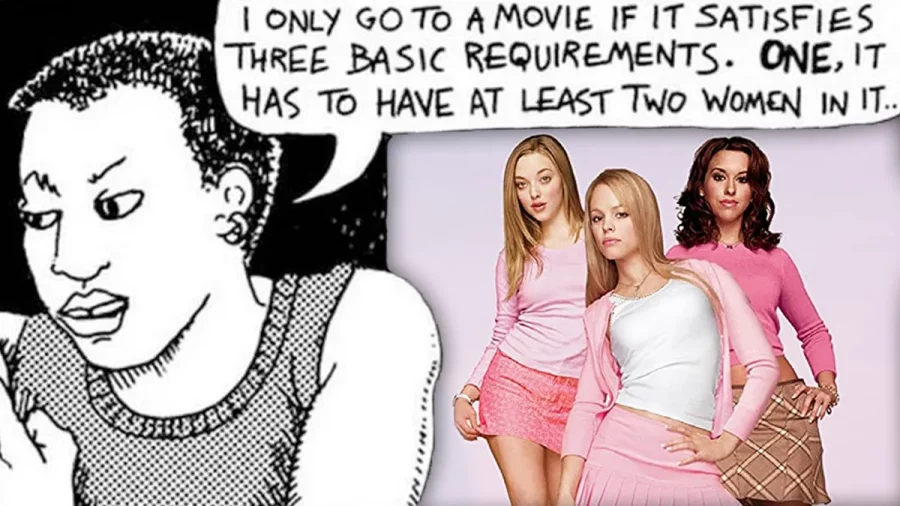While the male gaze is primarily viewed as appealing to a man’s sexual desires, I think it’s important to evaluate the egotistical side of the male gaze. The male gaze is usually spoken about in terms of how the media focuses on women in a way to appease male satisfaction, i.e., objectifying women physically instead of focusing on their character. While this is true and very apparent, the other half of the male gaze is less spoken about—the non-physical vanity of man. Others have delved into this portion of the male gaze, ‘I examine my development as a heterosexual male, focusing on the ways I both submitted to and pressed against the pull of ‘the male gaze’’ (Goldin, 2022), yet it is still less recognizable. The way men are portrayed purposefully to other men for their satisfaction. In most films and TV shows, men are the go-getters, the action stars, and the heroes. They portray qualities of strength and resilience, creating a male ideal that fosters characteristics that push the narrative of traditionally ‘manly men.’ When viewing the male gaze from this perspective, the contrast becomes clearer.
Let us take the infamous movie of the early 2000s, Mr. and Mrs. Smith, for example. In this film, we see the male gaze strongly shown in both characters. While most people would focus on how the woman is sexualized in the film, the man is also portrayed in a different idealistic sense. Actress Megan Fox is always seen doing her job in slick outfits, with emphasis on her body and physical attributes. While this is unnecessary in the plot, it becomes a dignifying part of her character, while the male character’s physical attributes are not focused on in the same way. Brad Pitt is instead characterized more by his action scenes, his sneaking around, and boy talk with the other male colleagues. There are continuously more scenes of him being ‘with the boys’ and being strong and brave. The reason I specifically picked this film to dive into is that the two leads both have the same career, so it is inevitable to see the contrast. Brad Pitt is definitely not wearing clothes that outline his butt, so why does his wife in the film constantly get the camera fixed on her for it?
While researching the male gaze, I came across the Bechdel test. ‘The Bechdel test is a sequence of three questions designed to assess the presence of women in movies’ (Agarwal et al., 2015). The Bechdel test was created to prove that women are not truly shown for their characters in movies, merely as supporting roles. A main question within this test is to see if any women characters have a scene for over a minute that isn’t talking about a man. When watching the film above, I have found that it has failed. In every scene where the female lead is speaking or having a conversation without the male lead, the conversation is about or related to the male lead—leaving no room for personal characteristics as a character merely outside of her male counterpart.

As read, there are many parts of the male gaze to be divided into aside from the traditional aspects of it. It is a complex topic, and it doesn’t always have to do with the emphasis on women, but even the emphasis on a traditional male stereotype.
Bibliography
Goldin, D. (2022). A Male Glance at the ‘Male Gaze’. Psychoanalytic Inquiry, 42(7), pp.601–610. doi https://doi.org/10.1080/07351690.2022.2121150.
Agarwal, A., Zheng, J., Kamath, S., Balasubramanian, S. and Dey, S. (2015). Key Female Characters in Film Have More to Talk About Besides Men: Automating the Bechdel Test. [online] Association for Computational Linguistics, pp.830–840. Available at: https://aclanthology.org/N15-1084.pdf [Accessed 1 Sep. 2021].


This is a very good post. I like the way you have explained how in different ways in this industry women have been hyper-sexualized as we have always seen but you have also mentioned the fact that in other aspects, generally the men’s scenes focus more on the actor and his attributes in the action scenes and showing how strong and masculine they are. I think that Mr and Mrs Smith is a perfect example to talk about this topic and that you have done a good job with this post since you have not only focused on the obvious of the male gaze but you have gone further given another point of view. Very good post
I never thought of the male gaze to be an emphasis on the traditional male stereotype but your blog has helped me understand that concept. Do you think that the male gaze was something taught to men or is it in their human nature?